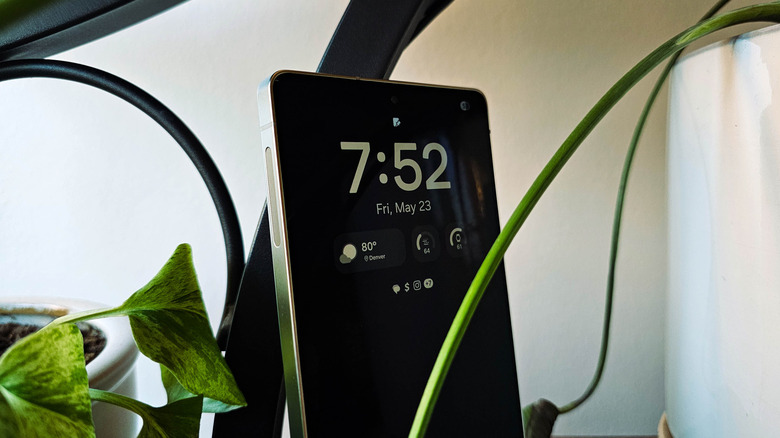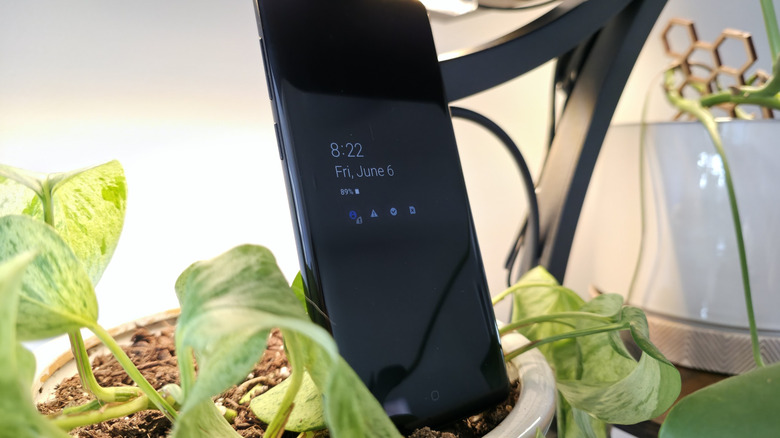Why Does Always On Display Move Around On Your Android Phone?
The always-on display, or AOD, is one of the most convenient features common to newer Android phones. Thanks to battery-friendly OLED smartphone displays, which only illuminate the pixels being used at any time, it is possible to display a clock, notifications, and other glanceable information without the AOD using too much battery. This allows you to check the time and see if any notifications require your attention without needing to touch your phone. Depending on the manufacturer, you can even interact with the AOD for a quick shortcut to your clock, calendar, or notifications.
However, if you're using one of the many phones with always-on displays from the likes of Samsung, Google, and other manufacturers, you may have noticed something strange. The location of the always-on clock isn't consistent. You may sometimes notice that it isn't centered on the screen, or that it has shifted from the top of the screen to the middle or bottom. The shifting can certainly be annoying. It may even lead you to worry that something might be wrong with your Android phone. However, you can rest assured that a restless, always-on display is nothing to be worried about.
Not only is the shifting position of your phone's always-on display normal, it's a necessary feature designed to protect your phone from damage. Because of the way OLED smartphone displays work, leaving the clock in a single location could lead to serious issues. Let's dive into the details.
The Always-on display adjusts position to protect your phone's display
OLED displays like those commonly found on newer smartphones that have always-on displays are generally a lot better than the LCD screens found on vintage smartphones. They have excellent contrast and energy efficiency thanks to their per-pixel illumination, which generally translates to more accurate image reproduction and better battery life, all other things being equal. However, they have a major weakness that makes it easy to ruin them forever if you're not careful. Leaving a static image displayed on an OLED display for too long can cause individual pixels to get frozen. Once this happens, the display will continue to display a ghostly echo of that image for quite a while, sometimes permanently. This is referred to as "OLED burn-in," and if it doesn't go away on its own, there's no way to fix OLED burn-in other than to replace your phone's display entirely.
By now, you probably see how preventing OLED burn-in connects to the shifting of your always-on display. The AOD shifts around the screen to prevent burn-in from occurring. If it were to remain static, you'd likely wind up with the shadow of your always-on display's clock permanently plastered across your screen, even while using other apps. By ensuring that the always-on display never stays in one place for too long, your smartphone avoids this while still providing the AOD feature. So, even though it can be a bit annoying, the moving AOD is not a bug or error.
In the highly unlikely chance that you do notice any burn-in from your phone's always-on display, you should immediately disable the feature. Turning the AOD off won't reverse any screen burn, but it will prevent the issue from getting any worse.

